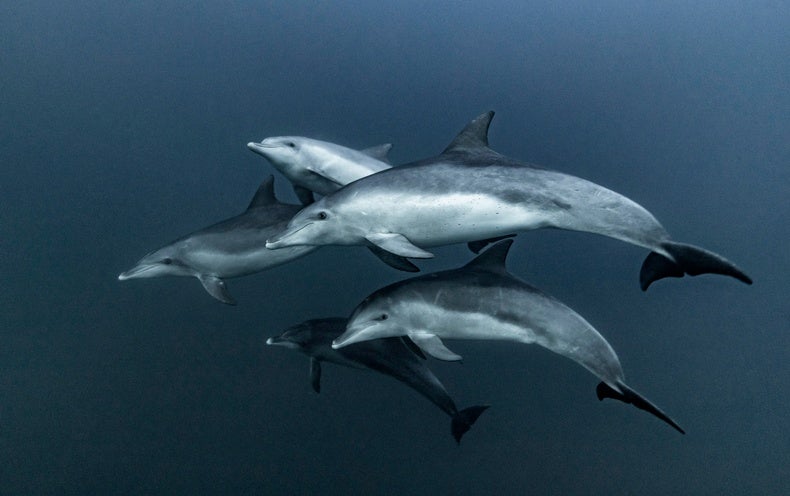When dolphins swim through the ocean, it looks effortless. By whipping their tail up and down, the sleek marine mammals propel themselves forward in a seamless glide that could make any human swimmer jealous. But this up-down tail motion puts a lot of stress on a dolphin’s body, compressing its organs and sending pulses of blood pressure to its brain.
Now researchers in Canada have a theory as to how cetaceans—dolphins, whales and porpoises—manage to protect their brain from these swimming-induced blood pressure pulses. As described in a new paper published in Science, it’s all thanks to specialized networks of blood vessels known as “retia mirabilia.”
Scientists have long known that many animals have retia mirabilia. Greek physician Galen described the structures in the second century C.E. and gave them their name, which translates to “wonderful nets.” Indeed, retia mirabilia resemble complex stringy nets made up of thin veins and thick arteries. They can be found in a variety of mammals, birds and fish—but rarely humans.
In most animals that have them, retia mirabilia serve as a mechanism for temperature regulation, and they have a unique structure. “You can almost imagine drawing a flower with a really big center—like a sunflower, for example—and think of it as one large central tube surrounded by several smaller tubes around that circle,” says Sarah Kienle, a biologist at Baylor University, who was not involved in the recent study. “That’s essentially what we’re talking about.”
That big central artery carries warm blood from the body’s heart to its extremities, while the surrounding veins carry cold blood in the opposite direction, Kienle explains. And because they’re situated right next to each other, heat transfers between the artery and the veins to ensure that neither ends up too cold or hot.
Flamingos are a classic example of animals that benefit from retia mirabilia, Kienle says. “Because they stand in water overnight, [retia mirabilia] in their lower legs help prevent all the cool water from causing their body temperature to become too cold,” she adds. Similar retia mirabilia have been found in marine mammals, helping to regulate the temperature of their flippers, tongue and testicles.
Dolphins and other cetaceans possess additional retia mirabilia snaking around their lungs, up their spine and into their brain. These particular networks are quite different from those found in other animals….
Click Here to Read the Full Original Article at Scientific American Content: Global…

